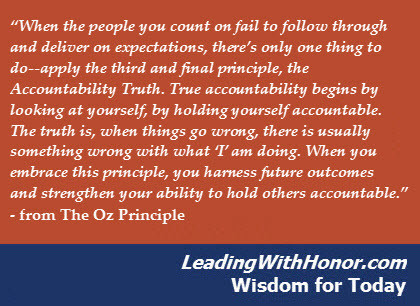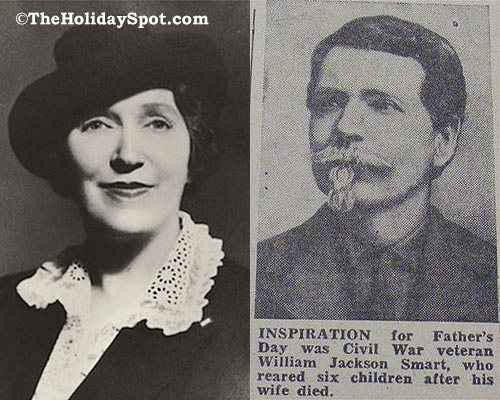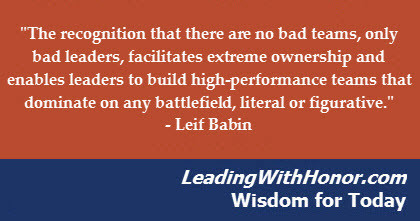Lee Ellis's Blog, page 270
June 29, 2016
My Celebration of Freedom in 90 Seconds
As we approach Independence Day this year, I always reflect on the freedom that we enjoy as Americans. In particular, I remember my personal moment of freedom more than 40 years ago from the prison camps of Vietnam—here’s a 90-second silent clip.
I encourage you to do your part to help preserve freedom for you, your family, and your neighbors – thank you


June 28, 2016
A Frequently Asked Leadership Question from Lee Ellis – See Inside
A Frequently Asked Leadership Question from Lee Ellis – “Why has accountability become synonymous with intolerance? And how do people develop accountability the right way?”
Answer: “Accountability is best developed in an environment where it is demonstrated by the leaders and then regularly emphasized that it’s the expected way of operating. Ideally this starts at home and school where parents and significant others demonstrate by their day-to-day behaviors that they are accountable.
Also, it’s reinforced when people have clear defined responsibilities with clear expectations and then immediate accountability with consequences when those expectations are not fulfilled. When people don’t deliver on their promises, do their duty, fulfill expectations and consequences follow, they learn how the world works. Without accountability and consequences, bad lessons are interpreted that you can underperform, ignore your responsibilities and promises and nothing negative will happen—you can get off the hook. In the end, this does not serve anyone well.
Accountability comes sooner or later, even if it takes a generation or two. My concern is that our in-attention to accountability is already having consequences in our culture and it will likely become worse in the days ahead unless a majority of people take a stand. What does it mean that football coaches turn their heads to sexual abuse, when people attack speakers in a country that is supposed to have free speech, and now even politicians and journalist are saying that violence against people of the other party is justified? What does it mean when laws are not enforced against certain groups of people and then are used to punish other groups?
It appears that our current culture of tolerance and ‘being nice’ has been interpreted that there is no accountability. Also, over-protection of our young people, never letting them fail and bailing them out when they don’t meet their responsibilities seems to have taught them a very negative lesson about accountability and life.”
We’d love to hear your comments and insights–please share them below.
Watch the Trailer for Lee’s Upcoming Release, Engage with Honor: Building a Culture of Courageous Accountability –


June 27, 2016
Debuting the New Trailer for Engage with Honor – See Inside
Debuting the new Trailer for Lee Ellis’ upcoming release, Engage with Honor – please watch and share!


June 26, 2016
On This Day in Leadership History for June 26, 2016
On this day in leadership history in 1979, Muhammad Ali, at 37 years old, announced that he was retiring as world heavyweight boxing champion. Ali spent the next 37 years later continuing to enjoy his family, post-boxing career in several areas, and faced his Parkinson’s Disease battle head on. What’s the leadership lesson? Slowing down or retiring does not mean stopping all activity and influence. Continue your purpose and use the knowledge and experience that you’ve gained to serve others!
Muhammad Ali – Wikipedia


June 24, 2016
Leading with Honor Wisdom for Today, June 24, 2016
“When the people you count on fail to follow through and deliver on expectations, there’s only one thing to do—apply the third and final principle, the Accountability Truth. True accountability begins by looking at yourself, by holding yourself accountable. The truth is, when things go wrong, there is usually something wrong with what ‘I’ am doing. When you embrace this principle, you harness future outcomes and strengthen your ability to hold others accountable.” – from The Oz Principle


June 23, 2016
Endorsements Arriving for Engage with Honor
 We’re so grateful for new endorsements coming in for Lee’s upcoming September 2016 release entitled “Engage with Honor” – here’s one from the book’s Foreword by Ralph de la Vega, Vice Chairman of AT&T Inc. and CEO of AT&T Business Solutions and AT&T International –
We’re so grateful for new endorsements coming in for Lee’s upcoming September 2016 release entitled “Engage with Honor” – here’s one from the book’s Foreword by Ralph de la Vega, Vice Chairman of AT&T Inc. and CEO of AT&T Business Solutions and AT&T International –
“I’ve had the pleasure of working with Lee in his civilian life as a leadership consultant and have admired the way he uses those experiences to help executives develop their own leadership models. He and I share a passion for doing business the honorable way and for developing leaders who will embody the character and the values that will help lead their organizations with the highest integrity…in this new book, Lee expands the concept of honor in leadership and introduces the model to build a culture of Courageous Accountability…”
Learn More about Engage with Honor


June 22, 2016
3 Critical Leadership Skills to Refine Your Situational Awareness

Three F-16 Fighting Falcons pilots with the 8th Fighter Wing’s 80th Fighter Squadron, Kunsan Air Base, Republic of Korea (U.S. Air Force photo/Capt. Shannon Collins)
By Lee Ellis
In our day-to-day work, most of us would consider the statement “Think or Die” to be pretty dramatic. But for F-16 pilots, their slogan is defined as a keen level of “SA” or “Situational Awareness” because it’s a matter of life and death in their work.
700 Feet per Second Awareness
One of the roles of an F-16 pilot is to lead a strike force into enemy territory while sniffing out and destroying enemy radars and surface-to-air missiles. In the cockpit, one pilot manages all aspects of the process:
flying the aircraft by outside visual references while operating at more than 700 feet per second.
monitoring three screens (enemy radar detection; friendly and enemy aircraft; and weather/navigation).
detecting and eliminating enemy threats with onboard weapons.
Given what these pilots do in task-saturated life and death situations, it would seem easy for the rest of us to have good situational awareness while sitting in a meeting with our boss and peers.
Unfortunately it’s not that easy, and the absence of SA can be a threat to our effectiveness and career. >>Tweet This<<
Growing in Situational Awareness
Several years ago, one of my executive coaching clients (we’ll call him Brad), an up-and-coming junior executive, learned to “think or die” in his profession.
Regardless of the agenda for the meeting, Brad would often hijack it with his interruptions and comments. Some of his remarks were on point, but more often he took the group off subject and wasted everyone’s time. As his coach, it was my job to help him learn to adapt his behavior by reading a situation and managing his words and actions appropriately. It sounds simple, but it takes focus, discipline, and controlled energy for a quick thinking, highly verbal personality to master. After a few weeks of false starts, Brad finally managed to contain himself and limit his input during meetings.
One day after the meeting, one of his peers asked if he was feeling okay. He responded, “Sure, why do you ask?” His friend responded with a smile that he had never seen Brad so quiet and self-managed in a meeting. Later that day I got a phone call from Brad, beaming with energy over his new success. Brad made a crucial course correction, and it paid off. He is now a Senior VP in a Fortune 200 company.
As a facilitator for executive teams and boards, this skill is what I focus on the most—to be as situationally aware as possible of what’s going on in the room. >>Tweet This<<
Situational Awareness How-To
So how can you coach yourself to be more situationally aware?
– Know Yourself. Understand your strengths, struggles, and patterns of your natural behavior. Have you found yourself with someone who told stories or information that wasn’t relevant to anyone but them? Their mind is wandering as if they’re on cruise control. Bumping into clueless people happens often, doesn’t it? We use report tools like Leadership Behavior DNA often to help individuals and teams with a self-awareness of their natural behaviors.
– Know the Situations that Threaten Good SA. Examine your response at work with your manager and your team. Is your tendency to dominate or withdraw? How could you better manage your SA and engage to respond more effectively? I worked with one team where the manager avoided any disagreements or conflict by dominating the meetings. The manager just talked incessantly until everyone was worn out and disengaged.
– Be Proactive in Your Thinking. Set aside your own emotions or thoughts in the moment, and think about others and consider what might be going on with them in certain situations. Ask good questions to gain more insight. Then, coach yourself to respond in the most effective and appropriate way.
Mastering the Art of SA
At this point in my career, coaching and training others on this skill is challenging and rewarding—and as close to the excitement of being a fighter pilot as I can get. Situational awareness requires outward focus, listening, observing, and consideration of the dynamics of the situation as well as an inward awareness to manage ourselves to be the most effective. SA is always crucial to the art of leadership, and the stakes can be high.
So how is your SA? What has been your success? Lessons learned? Please share them with our followers.
LE
Lee shares his brief comments about Leadership Behavior DNA Assessment Services – Learn More


June 21, 2016
Leadership Picture of the Week – See Inside
June 19, 2016
On This Day in Leadership History for June 19, 2016
We’re celebrating fathers today! On this day in leadership history in 1910, the first Father’s Day celebration was held in Spokane, Washington, at the YMCA by Sonora Smart Dodd, who was born in Arkansas. Her father, the civil war veteran William Jackson Smart, was a single parent who raised his six children there.
What’s the leadership lesson? Fatherhood is one of the most remarkably powerful ways to influence those around you. We honor you and say thank you!
Father’s Day – Wikipedia


June 17, 2016
Leading with Honor Wisdom for Today, June 17, 2016
“The recognition that there are no bad teams, only bad leaders, facilitates extreme ownership and enables leaders to build high-performance teams that dominate on any battlefield, literal or figurative.” – Leif Babin












